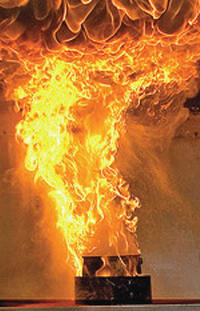Hi Azza,
To carry out the safety aspect you need to interrupt that back-up contactor's coil somehow. You can do a bunch of different ways.
Note: in no way am I endorsing any of these first-example-I-found links. Find your local equivalents.
1) You can put in a manual reset disc thermostat. (open on rising)
M/RESET Disk
That is in series with the safety contactor's coil.
This is the cleanest simplest way except it requires easy human access to reset. Works well in some situations and poorly in others. The safety contactor is just ON whenever power is applied to the system. You hear "clank" on power up.
2) You can put in a temp alarm who's output contacts are used to control the back-up (safety contactor). They use a temp sensor and are programmable.
One example
Another example
3) You can use a self resetting disk thermostat (open on rising) in series with a self latching relay.
Self resetting disk
You simply use the contactor's auxiliary NO contact in series with the disc thermostat. You parallel the auxiliary contact with a push button. When the system is started up you push the button. That pulls in the contactor which once pulled in stays pulled in as long as the systems is powered. Only the disk thermostat opening or a power loss drops out the contactor which then needs a human finger again.
You can fancy it up by using a Green LED panel light in parallel with the contactor coil to signify "OK". This can help with a human pushing a button and getting a pretty green confirmation that things are good.
OR
A Red LED panel light across available N.C. contactor aux contacts to signify alarm-tripped (no reheat). The feedback is more obscure in that the human finger makes the red light go out. Then it's more attention getting when it goes ON.
Of course you can use both lights and "have it all".

If the system cycles on and off frequently with no or little human intervention you can put in a one-shot relay to push-the-button once on start-up.
Keith Cress
kcress -



